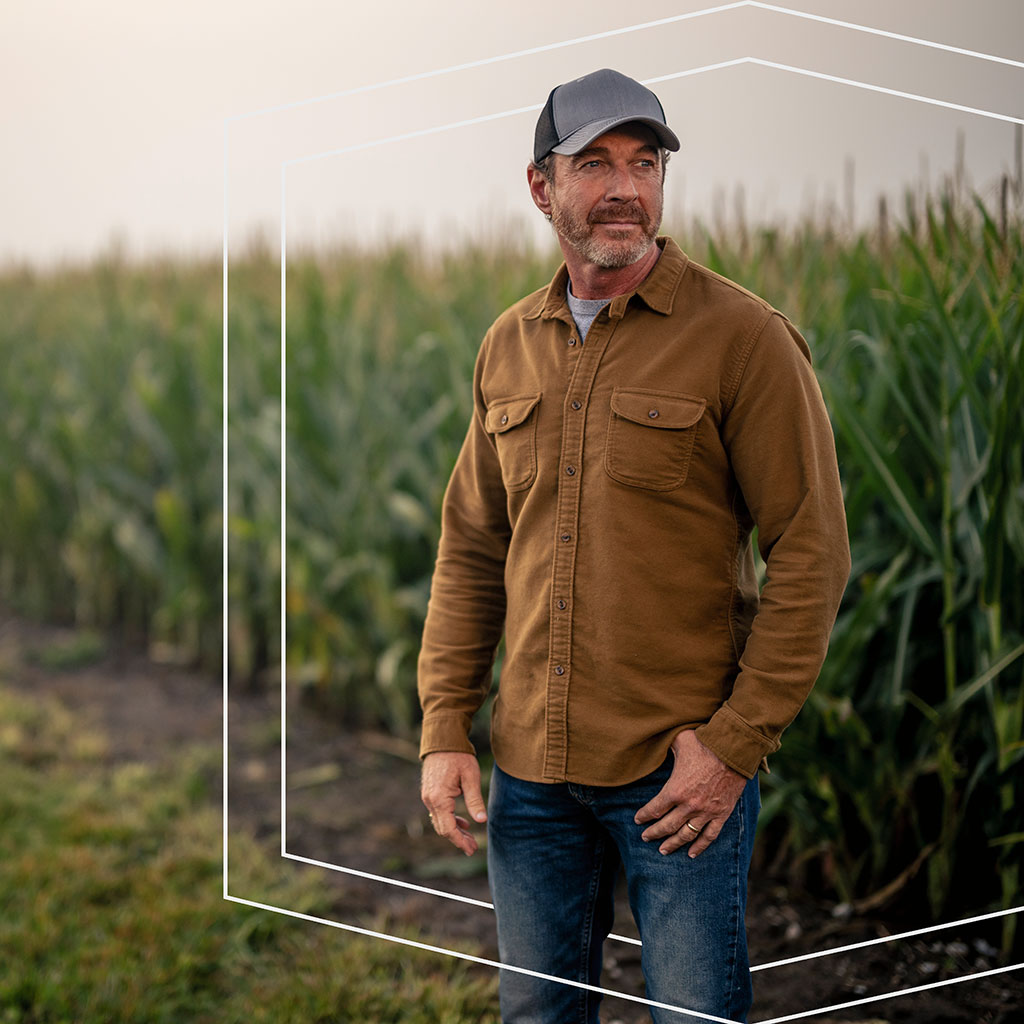Navigating the Field of Change: How agrimarketers can cultivate success
April 8, 2025

The agricultural landscape is constantly evolving. From shifting buyer behavior and technological advancements to increasing environmental and economic pressures, agribusinesses must navigate a complex web of challenges. In this high-stakes environment, effective marketing requires more than a message — it demands agility, empathy and a clear understanding of where the industry is headed. Below, we explore five key trends that are shaping the future of agrimarketing — and share examples of how we’re helping brands bring these insights to life.

1. Rise of the Digital-First Ag Buyer
Today’s producers are online, connected and expect personalized, tech-enabled experiences — without sacrificing the human element.
Gone are the days when farmers were considered tech-averse. Today’s agricultural professionals are digital-first — consuming content online, engaging on social media and turning to AI-powered platforms to make data-driven decisions. This new wave of buyers expects precision, but they also crave a personal touch in their interactions with brands.
As HLK brand strategist Warren Stepler puts it, “Today’s ag professionals are more connected than ever, but they value brands that feel human. The key is blending digital precision with real, honest storytelling.”
While advanced technologies like AgTech solutions (automation, AI, etc.) are transforming the industry, storytelling remains critical to building authentic relationships. It’s about translating complex data and innovation into messages that resonate deeply with real-world challenges faced by farmers.
2. Precision Messaging Powered by Data
Marketers are embracing AI and analytics to deliver the right message at the right time — while prioritizing privacy and trust.
Just as farmers rely on data to improve crop yields, agrimarketers must harness data to create targeted, timely and effective communications. AI and predictive analytics allow marketers to deliver the right message at the right time — but with this power comes responsibility: privacy, consent and transparency are essential to maintaining trust in an industry built on relationships.
The trend here is clear: Precision is not only for the field. It should guide every message and interaction between agribusinesses and their customers. By using smart data to understand where farmers are in their decision-making journey, brands can offer relevant solutions at the moments they matter most.
3. Sustainability as a Market Driver
Sustainability has moved from a differentiator to a core expectation, influencing both purchasing behavior and brand loyalty.
Whether it’s consumers seeking environmentally friendly products or farmers looking for ways to reduce their environmental footprint, sustainability has become a non-negotiable. Agribusinesses that take clear, measurable action on sustainability are winning trust and market share.
Take Pivot Bio, for example. Its focus on eco-friendly nitrogen solutions and responsible resource management reflects agriculture’s growing urgency around sustainability. Brands like Pivot are leading by example — showing how sustainability can be a value driver, not just a PR message.
Farmers want to know how their input choices support long-term viability — for their land, their livelihoods and future generations. The brands that provide proof, not just promises, will stand out.
4. Humanizing the AgTech Narrative
Brands must translate complex innovations into clear, relatable benefits that connect with farmers’ everyday realities.
AgTech is reshaping the future of agriculture — from biotechnology and biologics to data platforms and drone technology. But for many producers, flashy features aren’t enough. They want to know how new innovations solve real problems on the ground.
Effective marketing connects innovation to outcome. That means framing AgTech not as high-tech for tech’s sake, but as solutions that reduce labor costs, improve yields or simplify daily decision-making. Translating complexity into clarity is key.
Successful AgTech storytelling takes a farmer-first approach — bridging the gap between what’s possible and what’s practical. Brands must move beyond technology-centric messages and focus on how these tools directly benefit farmers.
5. Community-Led Engagement Takes Root
Peer networks, social media, and micro-influencers are becoming powerful tools for building trust and driving word-of-mouth.
In agriculture, trust often grows from the ground up. Farmers rely heavily on word-of-mouth recommendations and peer insights when evaluating products or partners. Today, that trust-building increasingly happens online.
Social media, YouTube, podcasts, and ag-focused forums are vibrant spaces where farmers share experiences and opinions. Smart brands are leaning into these communities — not just to broadcast messages, but to spark dialogue and amplify authentic stories.
The rise of micro-influencers — real farmers with niche but loyal followings and high levels of trust and engagement — presents a powerful opportunity for brands to connect authentically with specific segments of the agricultural community. As Emily Biras, Senior Communications Manager at HLK, explains, “In agriculture, trust is built in the field, in the grocery store, and now — online. The brands that cultivate conversations, not just content, will lead the way.”
HLK in Action: Channel® FieldFeast and the Power of Local Connection
Our work with the Channel seed brand exemplifies our understanding of the agribusiness sector and our ability to develop impactful marketing campaigns. Following Channel’s integration with 10 other regional seed brands, there was a critical need to reassure farmers of Channel’s continued commitment to local farming communities.
The FieldFeast campaign addressed this challenge by highlighting the knowledge and service of Channel SeedPros and reinforcing the brand’s “Next-Level Experience.” During harvest — when rural farmers often have limited food access — SeedPros surprised growers with meal deliveries, including drone and helicopter drop-offs.
This effort was supported with social content on platforms like Facebook and Instagram, where farmers share their daily experiences. By partnering with actual Channel customers to tell the story, the campaign built credibility and showed the real-life impact of the brand’s values.
The results? Engagement far exceeded industry benchmarks, with FieldFeast becoming Channel’s best-performing campaign to date. It proved that when agrimarketing is personal, purposeful and rooted in trust, it delivers.
Conclusion: Precision + Empathy = Impact
Today’s ag marketers face unprecedented complexity — from evolving digital behavior and climate concerns to innovation fatigue and a highly fragmented market. But with challenge comes opportunity.
The brands that succeed will be those that lead with empathy, ground their strategies in data, and communicate with clarity and heart. Agrimarketing has always been about relationships. In a world of disruption, that truth remains more powerful than ever.
Want to learn more? View our case studies to see how HLK is helping agriculture brands and other clients thrive in a field of change.